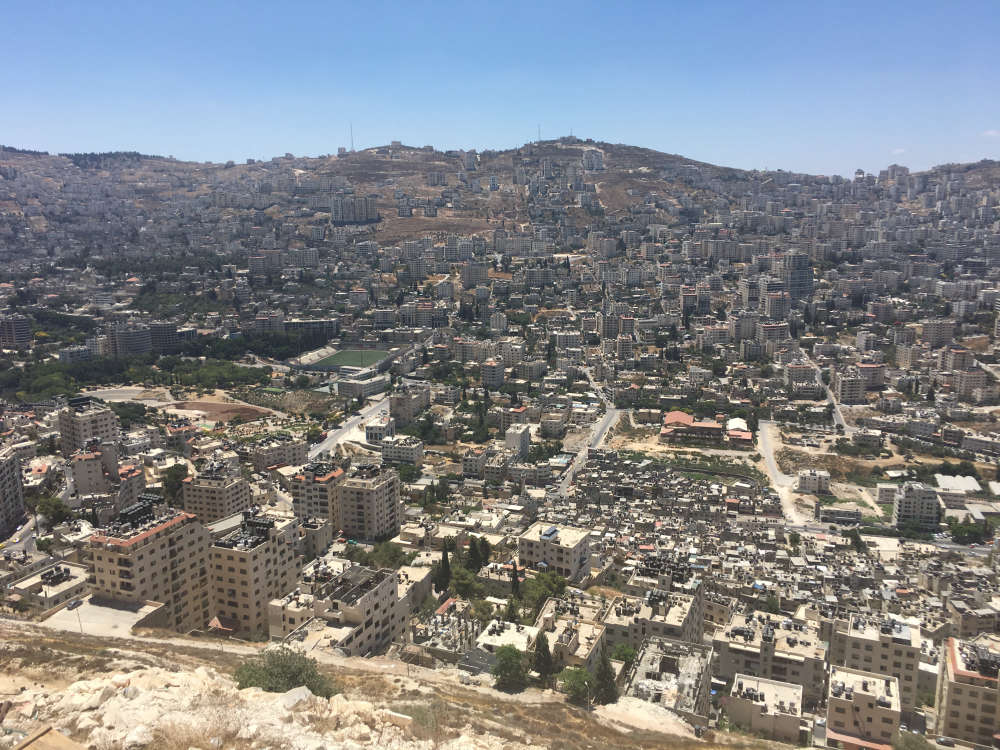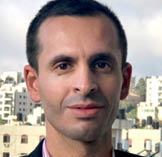Palestinian urban areas are growing exponentially while reeling under immense pressures on the environmental, socio-economic, and political fronts. With a 3.2 percent urban growth rate in 2015, Palestine is classified among the top 25 percent of urbanizing countries. At present, 75.3 percent of the population in Palestine is considered urban, living in 40 percent of the territory that is effectively under direct Palestinian jurisdiction, i.e., in the Gaza Strip and in the Oslo-designated areas A and B of the West Bank. The high urban growth rate is accompanied by random spatial development, as cities and communities have expanded haphazardly, encroached on surrounding agricultural land, and suffer from poor infrastructure.
Accordingly, the notion of sustainable urbanization has moved to center stage in Palestine’s local governance sector. Moreover, even though Palestine is merely a non-member observer state at the United Nations, it signed on to the 2030 Agenda for Sustainable Development in September 2015, and thereby also adopted Goal 11 – a stand-alone goal on cities, titled Make Cities and Human Settlements Inclusive, Safe, Resilient and Sustainable. Thus, Palestine has voluntarily recognized urbanization and city growth as a transformative force for development. By the same token, Palestine adopted the New Urban Agenda (NUA) in October 2016, thus once again agreeing to work towards more sustainable cities. The NUA resonates with the Sustainable Development Goals (SDGs), particularly Goal 11, and it identifies the critical means and tools by which cities may achieve Goal 11.
Whereas process is paramount, it cannot replace outcome. Indeed, the NUA is quite specific in itemizing desired urban outcomes that Palestinians can strive to achieve. But it begs the question whether these attributes can be applied to Palestine and realized in its urbanization context. After all, Palestinians have no sovereign control over more than 60 percent of their land in the West Bank, nor over the natural resources that these areas contain, and no control whatsoever over East Jerusalem. The policies of separation and territorial fragmentation further add to the challenges and limitations enforced on the ground by the Israeli authorities.
In addition to the bottom-line trio of sustainability pillars – society, economy, and environment – the political dimension is an important aspect of spatial planning and urban development, as it relates to resources, accountability, and strategic choices. Therefore, it should be obvious that the Palestinian Authority, if working merely from the national level and without support, cannot address the complications that stem from these unprecedented urbanization rates, creating growing pressure on land, infrastructure, and resources. Neither can the Palestinian Authority effectively exploit the potential that is pent up in cities and communities that are affected by the lack of a voice and the absence of participatory mechanisms of policy-making, which are mainly the result of the legacy of 50 years of military occupation. Bottom-up approaches, including local community consultations, multi-stakeholder discussions, good governance, and so on are all important; however, they do not replace the role of local government and planning professionals, nor are they sufficient to enable politicians or citizens to properly set the stage for productive, sustainable, and equitable urban growth under occupation.
Palestine’s large urban areas have advantages that may contribute to supporting equitable spatial-economic growth that extends beyond the currently dominating service sector. In fact, well-planned urbanization is an engine of sustained and inclusive economic growth, social and cultural development, and environmental protection. Moreover, it potentially contributes to the achievement of transformative and sustainable development.
It is important that the Palestinian Authority work toward Goal 11 with a citywide approach to spatial development, beyond its sectoral nature, where line ministries have sectoral strategies that might not necessarily overlap, unless carefully and holistically planned for. A useful tool at hand is the City Prosperity Index (CPI), introduced in 2012 by UN-Habitat as a global monitoring tool to measure sustainability at the urban level. This index enables both local government units and the central government in Palestine to utilize data that relate to spatial, demographic, economic, social, environmental, and geo-political challenges, including governance issues. The knowledge obtained from these data can help decision makers formulate better-informed policies. A case in point here is, for example, the shortage in housing units in Gaza City, the largest and most condensed urban center in Palestine, with more than 550,000 inhabitants and densities that exceed 100,000 persons per square kilometer. The Gaza Strip continues to suffer immensely, especially after the recent war that left thousands of families without proper shelter. More than 17,000 housing units were destroyed or severely damaged during the 2014 assault, and another 5,000 units require work on damage that was sustained in previous military campaigns. It is estimated that if the reconstruction process continues in the current fashion, more than two decades will be needed to address the housing deficit in the Gaza Strip, which currently is estimated to be as high as 75,000 units. Here, the CPI can be utilized by the local and central government in Gaza as a process tool in efforts to meet current needs and work toward more desirable urban outcomes.

There is much at stake for the localization and realization of Goal 11 in Palestine. Even though harmonious urbanization is faced with many challenges, it remains a main transformative force to enable the creation of an environment conducive to sustainable development and to the fulfillment of the NUA in Palestinian cities. The city one envisages under such normative frameworks will offer the right to adequate housing as a component of the right to an adequate standard of living without discrimination. It ensures access to safe and affordable drinking water and sanitation, as well as equal access for all to public goods and services that include food security and adequate nutrition, quality health care and education, a resilient infrastructure and means of transportation that allow for mobility, adequate energy supply, and air quality that is reasonably free of pollution. Cities need to allow for participatory civic engagement and foster social cohesion and inclusion; they must enable women’s full and effective participation, equal rights in all fields, and leadership at all levels of decision-making. Our cities should take the measures necessary to reduce disaster risks, ensure that economic growth is inclusive and sustainable, and guarantee the protection, conservation, restoration, and promotion of their internal and surrounding ecosystems, including natural habitats and biodiversity.
Well-planned urbanization does not happen by chance, but rather by careful and responsive design.
The political dimension of the Palestinian efforts to create and foster such cities and communities cannot be ignored. Palestine is not able to achieve the end of the occupation without support from abroad. The 2030 Agenda for Sustainable Development has pledged to “leave no one behind.” May this promise be applied also to Palestine and its cities and communities!


